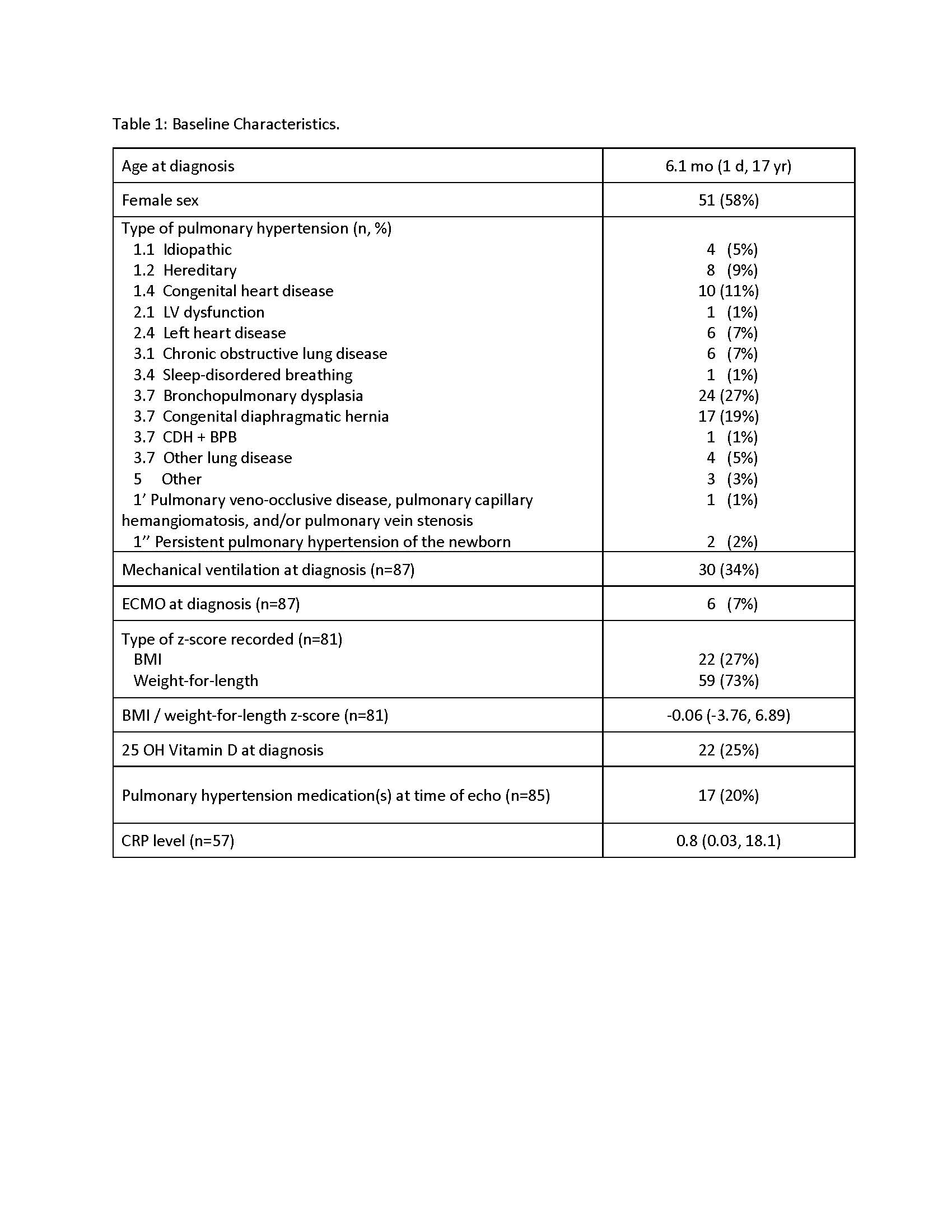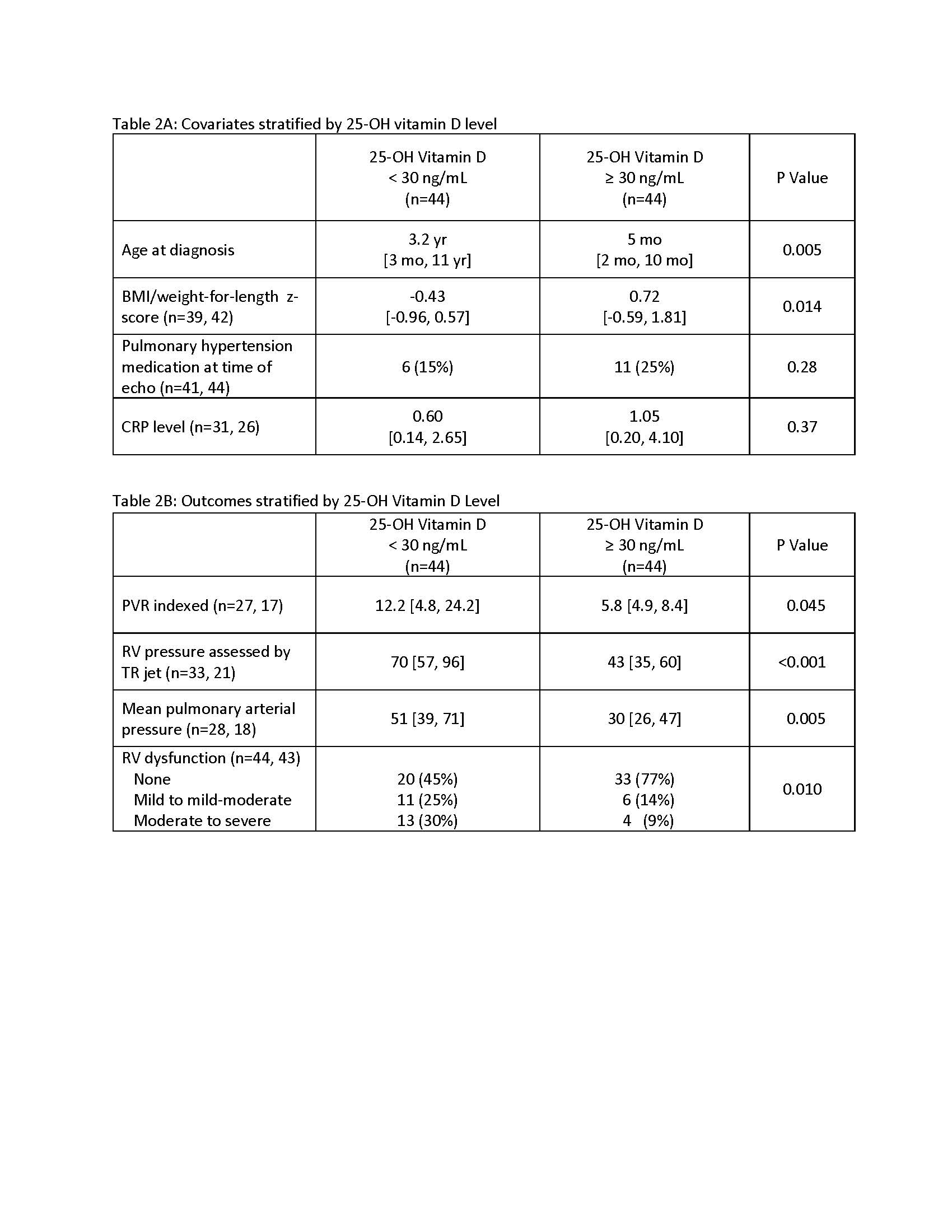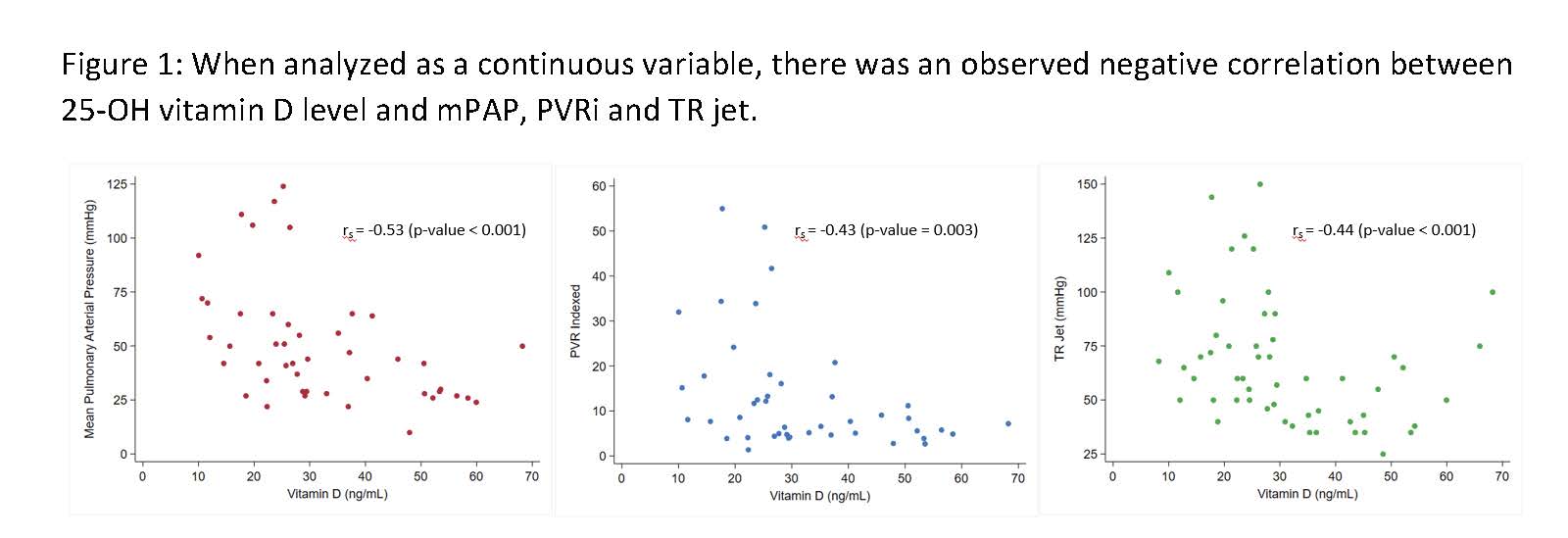Cardiology
Session: Cardiology 1
147 - Serum 25-Hydroxy Vitamin D Concentrations Correlate with Pulmonary Hypertension Measurements in Children
Monday, May 6, 2024
9:30 AM - 11:30 AM ET
Poster Number: 147
Publication Number: 147.3157
Publication Number: 147.3157
- SB
Sunakshi Bassi, MD
Fellow
Childrens Hospital of Philadelphia
Philadelphia, Pennsylvania, United States
Presenting Author(s)
Background: Lower 25-hydroxy vitamin D (25-OH vitamin D) adult patients with pulmonary hypertension (PH) have been associated with more symptomatic disease and higher risk of mortality. There are limited data on the relationship between vitamin D level and the severity of PH in pediatric patients.
Objective: To determine the association between 25-OH vitamin D levels and disease severity at diagnosis in pediatric patients with PH.
Design/Methods: This was an IRB-approved retrospective cross-sectional study of 88 patients diagnosed with PH < 18 years of age at Boston Children’s Hospital, between 1/1/2010-1/1/2023 with available serum 25-OH vitamin D concentrations within 3 months of diagnosis. Patients with a 25-OH vitamin D level ≥ 80 ng/mL were excluded. Primary outcomes included catheterization derived indexed pulmonary vascular resistance (PVRi), and mean pulmonary artery pressure (mPAP) and transthoracic echocardiogram derived right ventricular (RV) pressure assessed by tricuspid regurgitation (TR) jet, and qualitative grade of RV dysfunction. Baseline characteristics and outcomes were compared for patients with low (≤ 30 ng/mL) versus higher 25-OH vitamin D. Spearman correlations assessed associations between 25-OH vitamin D level and outcomes.
Results: Baseline characteristics are summarized in Table 1. The average age at diagnosis was 6.1 months (1 day – 17 years) and most were female (58%). The most common WSPH groups were Group 1 (25%) and Group 3 (60%), and 25-OH vitamin D levels ranged from 8.2-68.2 ng/mL (median 30.3 ng/mL). Patients with lower 25-OH vitamin D levels were older (p =0.005) and had lower body mass index (BMI) or weight-for-length z-scores (p = 0.014) (Table 2A). Patients with a low 25-OH vitamin D level were more likely to have a higher mPAP (p = 0.005), PVRi (p = 0.045), TR jet (p < 0.001), as well as right ventricular dysfunction (p = 0.010) (Table 2B). A negative correlation was observed between 25-OH vitamin D level and each of the primary outcomes (Figure 1).
Conclusion(s): A low 25-OH vitamin D level is associated with more severe disease at time of diagnosis in pediatric PH. Additional studies are required to determine causality and effects of 25-OH vitamin D supplementation in children with pulmonary hypertension.



